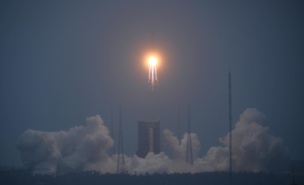Chang Guang, a Chinese satellite operator, successfully achieved 10 Gbps satellite-to-ground laser communication via a Jilin-1 satellite, the company announced last week. The downlink speed surpassed a previous record of 1 Gbps via radio frequency connectivity.
The first laser demonstration downlink included a satellite picture of Doha, Qatar.
Beam me down, Scotty: Laser communication’s higher frequencies enable significantly faster data transmission compared to traditional radio waves, although excessive cloud coverage can impact connection to laser ground stations.
- Laser communications instruments are also typically smaller and lighter than legacy RF tools.
At 108 birds and growing, Jilin-1 is one of the largest EO constellation in the world. China aims to implement laser communication on Jilin-1 and other commercial satellite constellations to increase data throughput and alleviate bottlenecks with ground stations.
“With [such] optical communication, it is possible to transmit a high-definition movie in one second, which is 10 to 1,000 times faster than the current microwave communication method,” said Li Yalin, a researcher from the participating Aerospace Information Research Institute.
NASA’s frickin’ laser beams: NASA is developing its own ultra-high-speed satellite-to-ground laser communication. NASA’s Pathfinder Technology Demonstrator 3 (PTD-3) mission achieved a 200 Gbps downlink rate in May.
- NASA is integrating laser communication technology with Artemis II’s Orion spacecraft to provide high-speed data transfers from the Moon.
Laser beams are also envisioned for inter-satellite communication. SpaceX, for example, plans to activate laser crosslinks on its next-gen Starlink birds, allowing its satellites to transmit data to each other.




